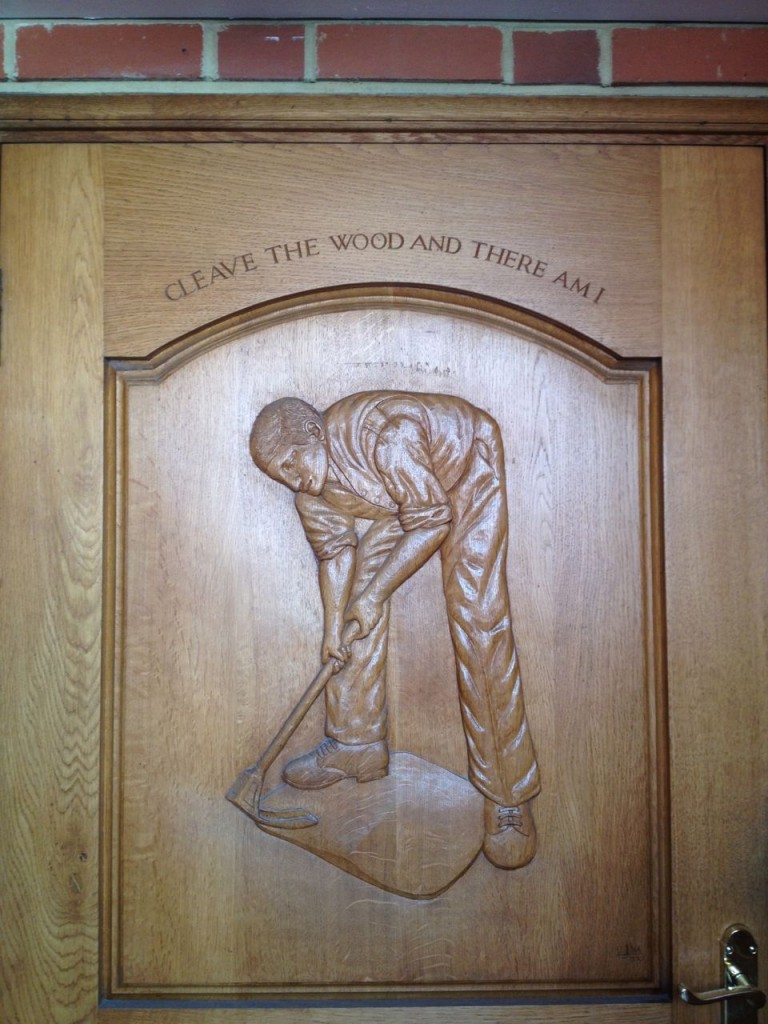
ProTip: It’s best to do research BEFORE you write your book. But in my case, almost a year after I handed in final edits to my editor, I discovered the perfect research location right in, well, almost my back yard (keeping in mind that in England, we don’t do “yards”).
Yesterday a friend and I went to the Living Chair Museum in High Wycombe, a few towns down the M40. We’d been meaning to stop in someday, see the history of chair making in the area—I’ve often run into chairs at antique stores that were made in the former chair making capital of High Wycombe.
With kids back in school, houseguests gone, and a full tank of petrol, we popped in for what we thought would be a short visit to look at some chairs.
Boy, were we mistaken. After we arrived, we were greeted by a man (who turned out to be the furniture designer) who insisted on taking us around, showing us some of the bespoke furniture the Stewart Linford company makes. The museum, such as it is, is located on the premises of the furniture maker. The young man offered us an in-depth tour, for the sum of £6. My friend and I looked at each other, and quickly agreed. The glimpse we’d seen was enticing, and as we got a behind-the-scenes tour of the workshops where the furniture is crafted, we both came to the conclusion we’d gotten our money’s worth.
And this is when I realized my mistake: I should have come here years ago, when I first had the idea for an Amish furniture maker as the hero of my novel, Temptation.
And this is when I realized my mistake: I should have come here years ago, when I first had the idea for an Amish furniture maker as the hero of my novel, Temptation. All those hours on the internet, researching, all those copies of Fine Woodworking I read—I could have learned everything there was to know about making bespoke (custom) furniture right here!
I remember how I racked my brain, trying to “decorate” Jacob’s workshop: what would he have on his wall, I wondered? What sort of tools would be lying around? What woods would he have used? What would the sawdust look like, smell like? (The answer to the last: flour. The dust produced in the process of shaping the fine furniture is more like flour than the thick crumbs I’d imagined.)

I know what you’re thinking: my furniture maker was Amish, and wasn’t allowed to use electricity. But as I learned during my research of the Amish, they easily find ways around this prohibition. Pneumatic tools are perfectly acceptable, as are gas-generator powered tools.
While on our tour we saw just how many details go into making a fine piece of furniture. The design, first of all, which incorporates the choice of wood (did you know elm was almost always used for chair seats?) as well as the customer’s particular whim. There were photos of a Catherine of Aragon desk that must have been quite the show piece. We also saw the last of 125 limited edition Winston Churchill chairs, complete with a spring-operated cigar drawer in the seat! Other pieces reflected the designer’s imagination (and I so wanted to pick his brain, wondering if he ever “saw” furniture in a dream the way Jacob did).
There was one room filled with antique chairs, including a reproduction that was distressed to look exactly like the piece it was created to match. We learned that Windsor chairs from different parts of the country were all different, with certain design elements particular to the Thames Valley while others were unique to the West Country. And surprisingly, the older Windsor chairs were likely to be wider, since they were originally used as painted lawn furniture for the landed gentry, who happened to be, ahem, rather portly.
Chairs got smaller, as they were brought indoors to replace benches by the middle class. Windsor chairs are made in America, too, but not in the rest of Europe. It’s a uniquely English design. Another thing I learned, that solved quite a few mysteries: there are different names for different types of wood, furniture, etc. So “burr oak” in England is “burl oak” in America. I always thought I’d been hearing it wrong!
Sadly, we also learned that burled elm is a thing of the past. But we saw a beautiful bench made from burled elm, a priceless piece that’s truly one-of-a-kind.
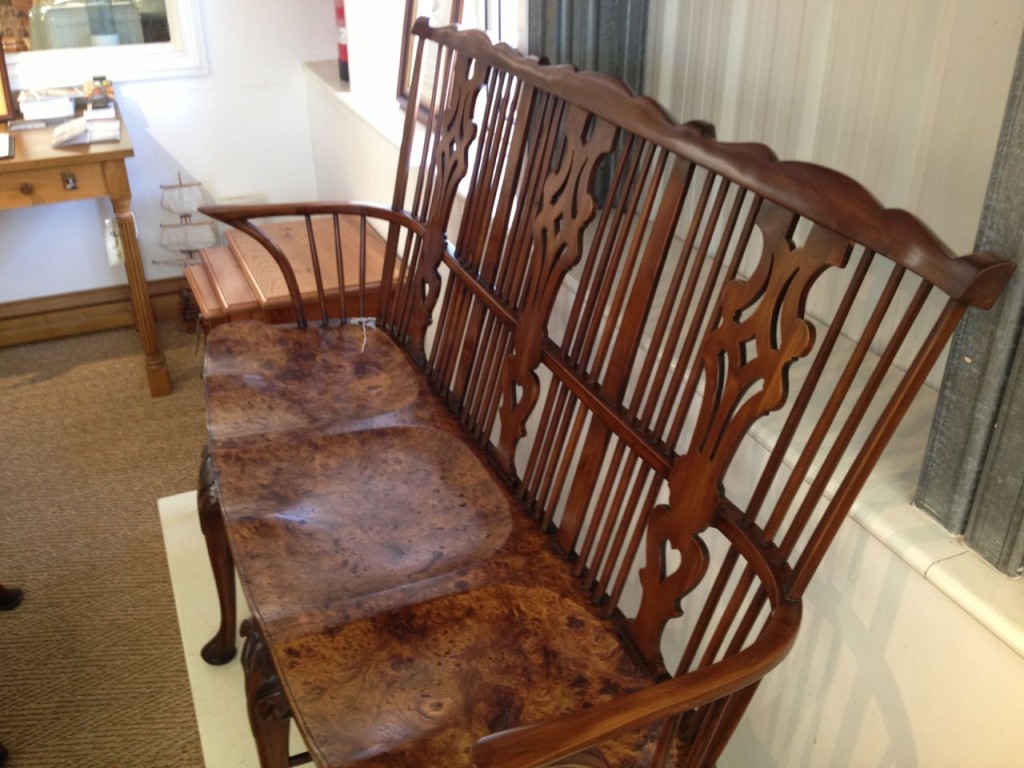
For more information about the Living Chair Museum, check out their website, or better yet, stop by their premises in High Wycombe, off Desborough Road. And if you’re researching a book about a furniture maker, do stop by BEFORE you finish your book!
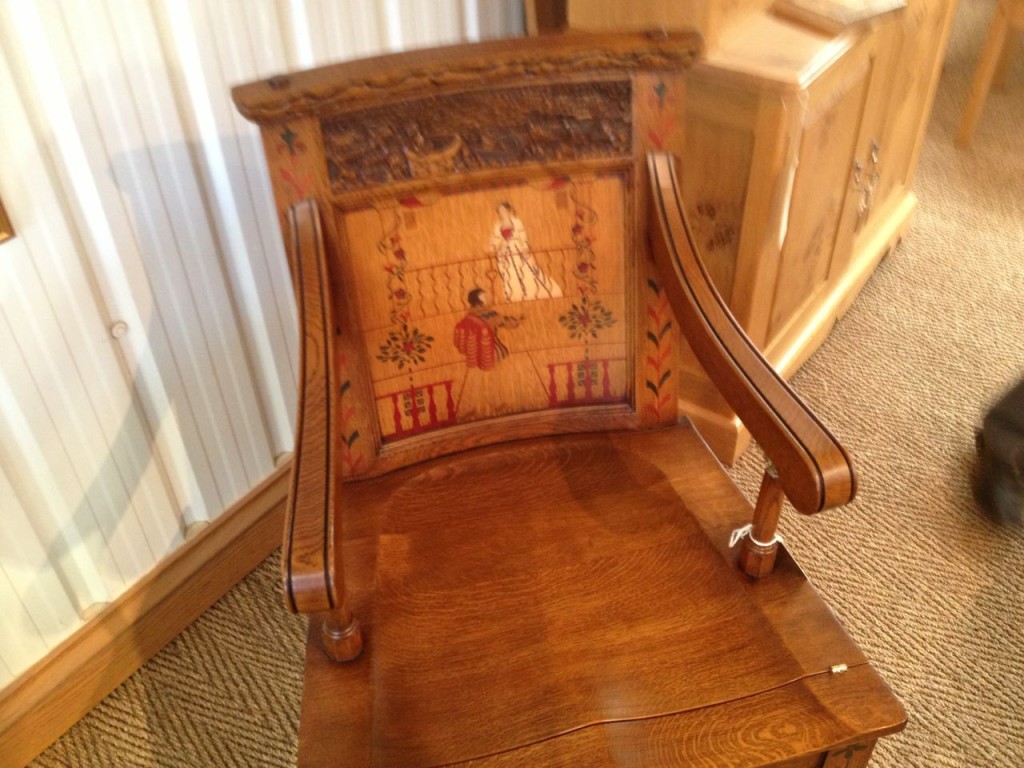
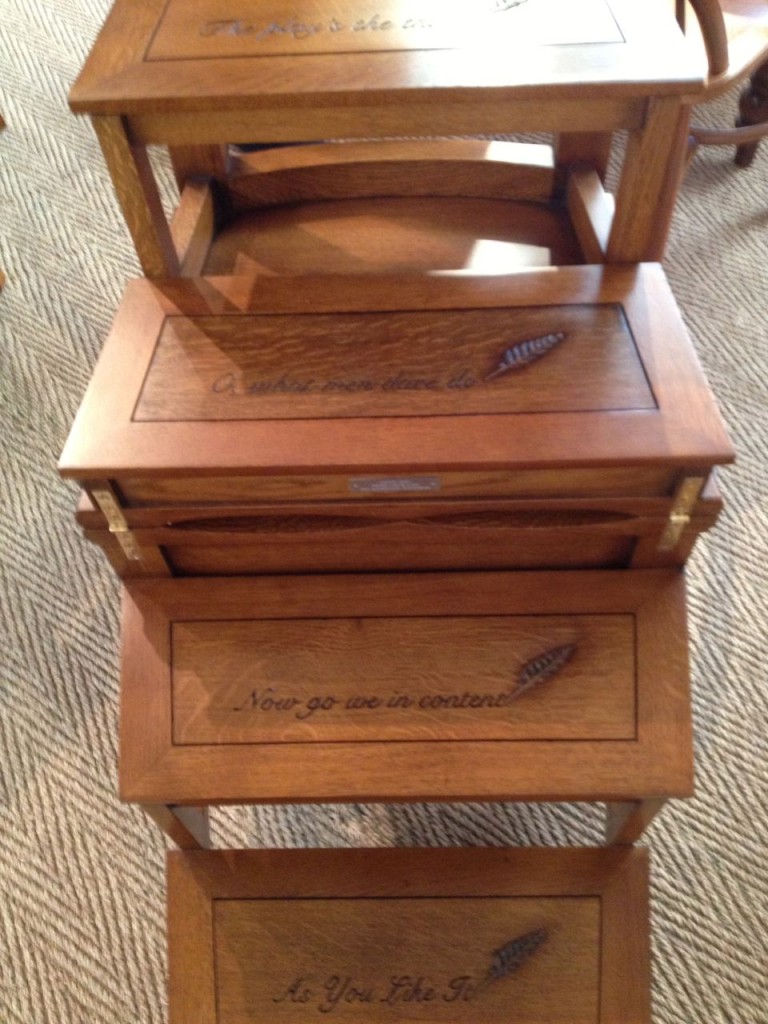

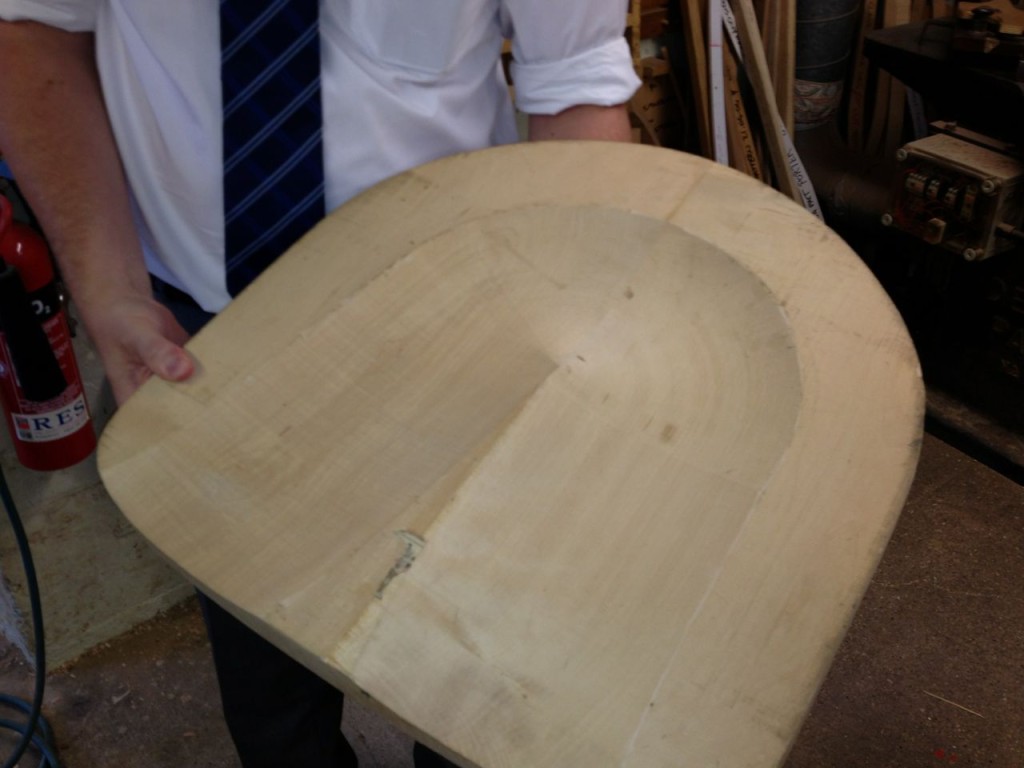
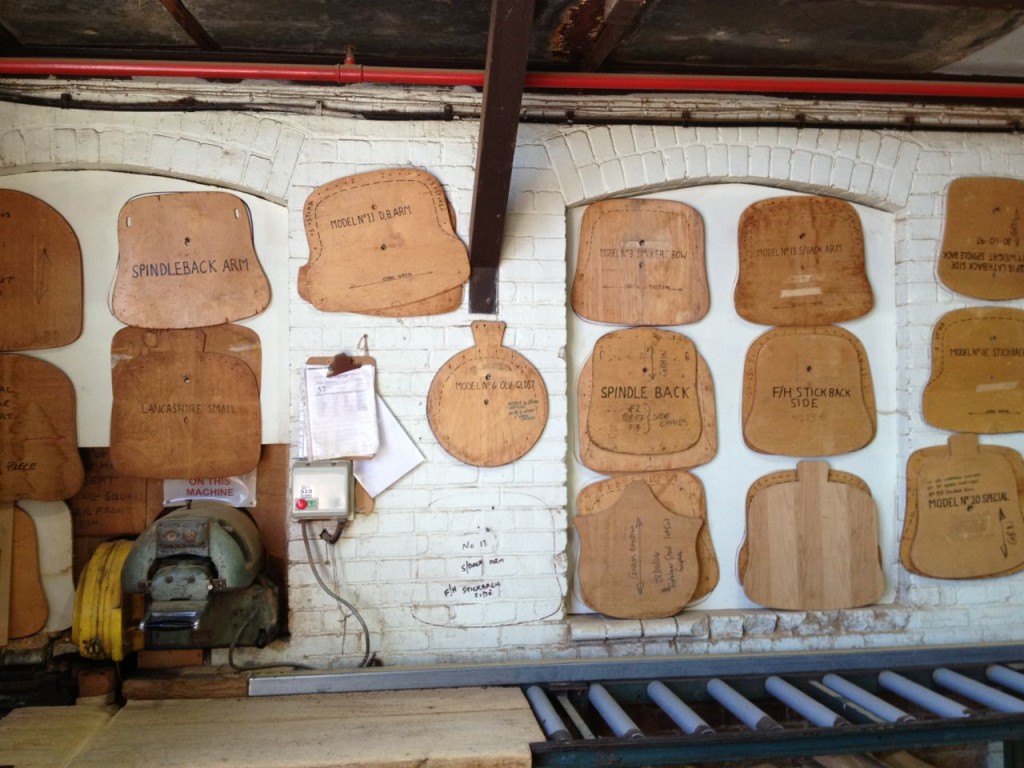
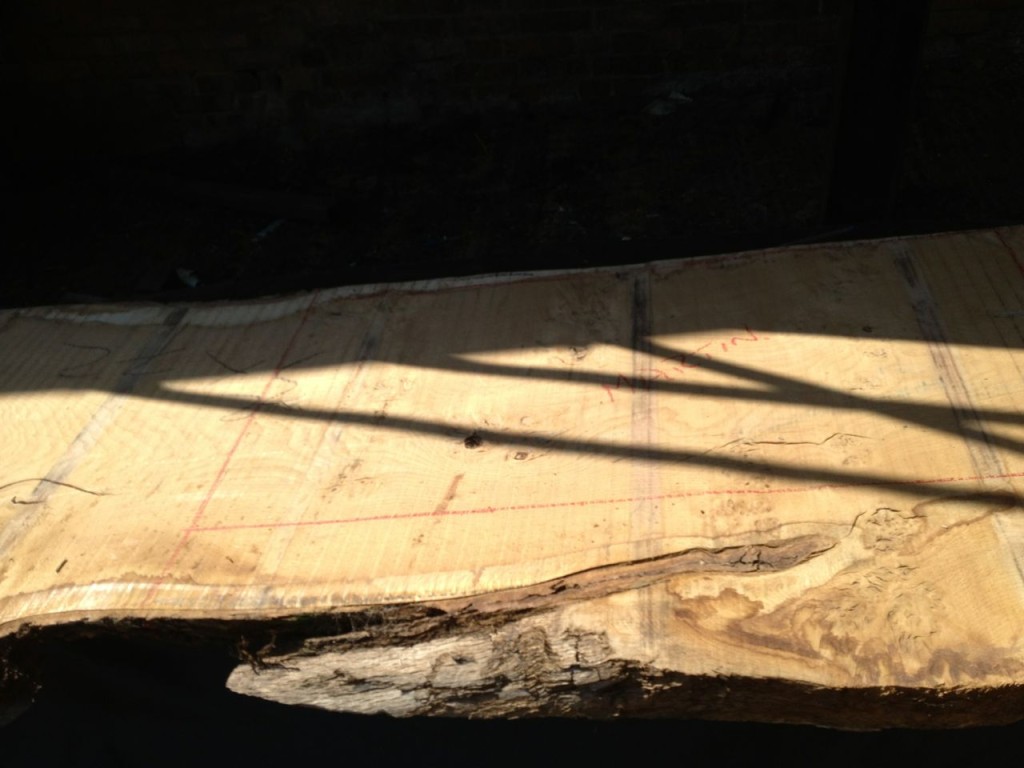
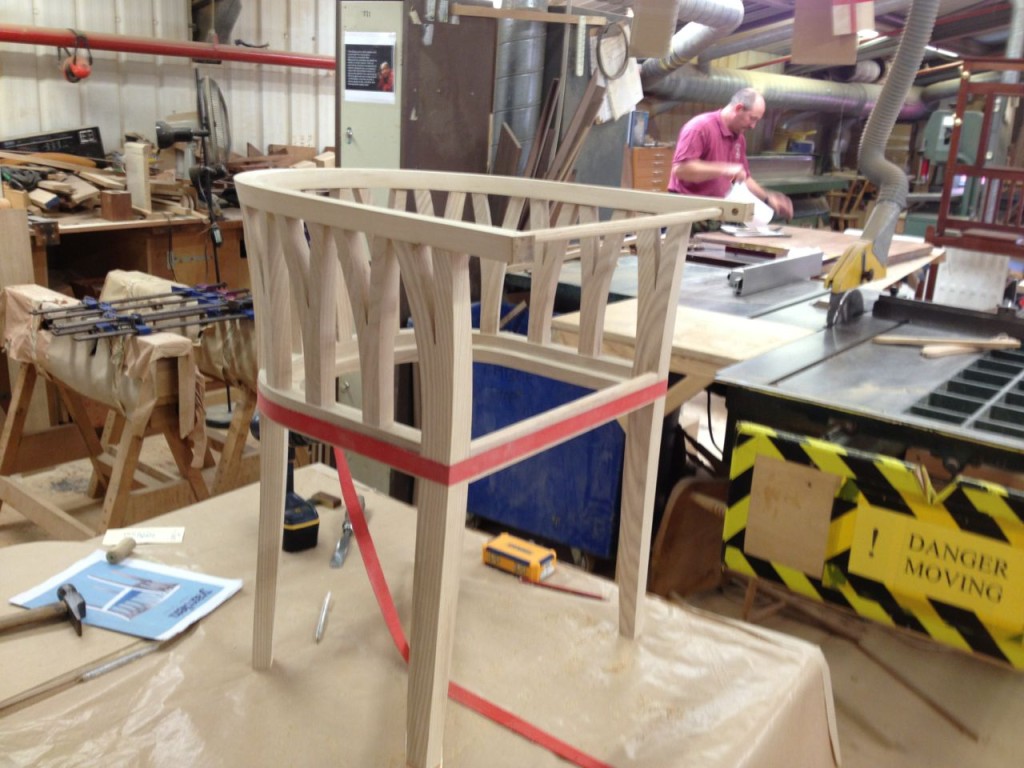

Carol Rogers
May 18, 2014 at 9:42 pm (11 years ago)saw the website on the chair museum didn’t know it was at Stewart Linford these days. Being ex Wycombe girl from furniture trade family I will definitely visit soon. Looking for maker of carved spoonback chair with JP on the underneath at the rear – could only find one J Parker in Wycombe 1904. Looking at it carving could be art nouveau – any help would be grateful. C Rogers
Kathryn Barrett
May 19, 2014 at 5:06 am (11 years ago)You should definitely visit! The chap who took us around was very knowledgeable about chairs; he might have an answer for you. But 19904 is definitely art nouveau period, so could be. Good luck finding out!
Joseph Thompson
October 7, 2015 at 10:56 am (10 years ago)I am an 83 year old cabinet maker and I am making my first Windsor chair.I visited the chair museum 30?years ago. Is it still open open?
Andrew Hume Voegeli
April 14, 2016 at 1:16 pm (9 years ago)I have a chair with the name ” H Anderson, Maker, Stokenchurch” and the initial “AWF” inscribed at the back of the seat. Is it of any interest as my wife wants to throw it out. We picked it up in Normandy, France and I can only assume that it was brought there by British soldiers after D Day.
Peter Smith
May 23, 2016 at 10:56 am (9 years ago)Dear Sir or Madam
Please find my email for a Application form position for a Joinery Assistant / Sanding & Polishing Assistant for a Vacancy at your company.
Many Thanks
Peter Smith PS
Please find my Phone number 07833652597.
Dear Madam
I have work in a Wood Furniture Factory be for in Stokenchurch one was Hany Handson Woodyard.
Many thanks
Guy Gibson
March 20, 2021 at 4:28 pm (5 years ago)I have a stool marked H Anderson maker Stokenchurch but there’s also a date 1945 and initials maybe LCC or LCG?
Robert
August 16, 2021 at 2:19 pm (4 years ago)Stuart Linford Furniture went into liquidation in 2015 and the factory was demolished and housing built there.
High Wycombe Chair Making Museum CIC is now under new management at Grafton Street HP12 3AJ